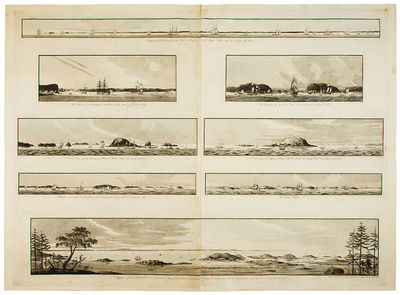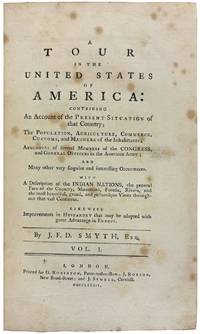1781 · London
by DES BARRES, J. F. W. (1721-1824)
London: J.F.W. Des Barres, 1781. Hand-colored line engraving and aquatint. Two plates printed on two sheets, joined with 8 views arranged in 5 rows. Sheet size: 32 x 43 3/4 inches. 8 navigational profile views from the greatest of all 18th century sea atlases.
These eight views of sites in and around Nova Scotia were designed to give navigators additional information to the soundings on the charts of these same places. Several of the placenames have changed, but Beaver Island, Port Bickerton, Chedabucto Bay and Canso remain. This is the 5th of 5 states with many ships and aquatinted features to the landscapes added to the original plates. Des (truncated)
These eight views of sites in and around Nova Scotia were designed to give navigators additional information to the soundings on the charts of these same places. Several of the placenames have changed, but Beaver Island, Port Bickerton, Chedabucto Bay and Canso remain. This is the 5th of 5 states with many ships and aquatinted features to the landscapes added to the original plates. Des (truncated)


